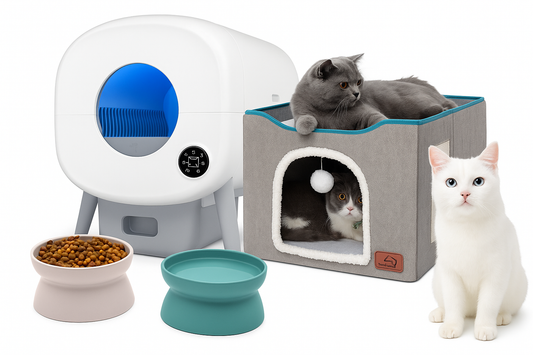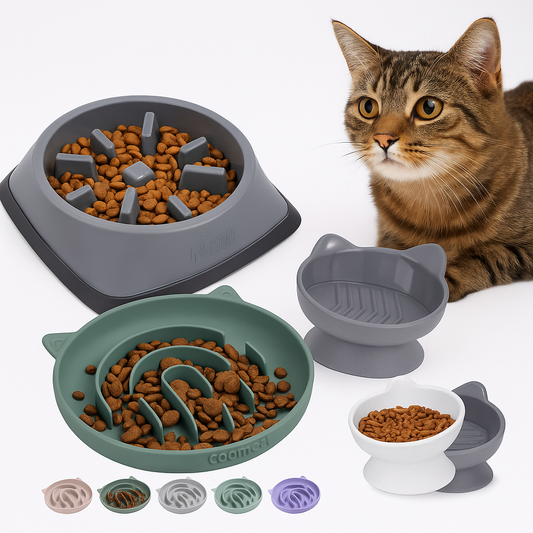
How Fast Can a House Cat Run? You’ll Be Surprised
Ever been minding your own business when your cat suddenly takes off like it’s auditioning for the Olympics? One second it’s curled up on the windowsill, the next it’s tearing across the living room like its tail is on fire. It’s not just you—cat zoomies are a real thing, and behind those outbursts is some serious speed.
So, how fast can a house cat really run? The short answer: pretty fast. The longer answer? Let’s break it down.
The Numbers: Cat Speed in MPH

Believe it or not, your average domestic cat can hit speeds of 25 to 30 miles per hour in short bursts. That’s faster than most backyard dogs and just shy of a professional sprinter’s top speed. For context, Usain Bolt, the fastest human ever recorded, topped out at 27.8 mph during his legendary 100-meter sprint. So yeah—your cat is basically the Usain Bolt of the living room, minus the gold medals and endorsements.
And they don’t need a track, training, or even a reason that makes sense. Sometimes it’s a speck of dust, a shadow, or pure chaotic energy that sets them off.
But there's a catch: cats aren’t built for marathons. They’re explosive sprinters, not long-distance joggers. Their muscles are optimized for quick, powerful acceleration—not endurance. That means they’ll hit top speed for maybe 5 to 10 seconds, zip around a corner like they’re in a Fast & Furious movie, then collapse dramatically in the middle of the hallway like they just finished a triathlon. Bonus points if they dramatically lick their paw afterward, as if nothing happened.
It’s short, it’s intense, and it’s peak cat.
Source: https://cats.com/how-fast-can-a-cat-run?utm_source
What Makes Cats So Fast?
Cats aren’t just fast because they feel like it. There are a bunch of biological reasons that make them mini athletes:
1. Flexible Spines
Cats have hyper-flexible spines that work like springs. Their vertebrae are loosely connected with powerful muscles, allowing them to extend their bodies far during each stride—kind of like a slingshot in motion. This flexibility gives them an impressive stride length for their size.
2. Muscular Hind Legs
If you’ve ever seen your cat leap onto a countertop in one bound, you know their back legs pack power. These muscles help launch them forward like a rocket during sprints.
3. Retractable Claws
Think of retractable claws like built-in cleats. They give cats grip when they need it and retract when they don’t, helping them accelerate, corner, and stop on a dime.
4. Balance and Agility
Cats have excellent balance and coordination. Their inner ear structure and low center of gravity let them change direction mid-sprint without wiping out—which is more than we can say for most toddlers (or adults).
Indoors vs. Outdoors: Can a Cat Hit Top Speed in the Living Room?

This is where it gets interesting. Most house cats don’t have a 100-meter straightaway to run on, so they rarely hit their top speed indoors. Still, during those 2 a.m. “zoomie” sessions, they’re often reaching 20 to 25 mph in very short sprints. That’s especially impressive considering they’re dodging furniture, rugs, random shoes, and the occasional startled human.
Some factors that influence how fast a house cat can run indoors include:
- Flooring (they prefer carpet for traction)
- Obstacles (they love parkour-style routes)
- Age and weight (younger, leaner cats tend to move faster)
So while your living room isn’t a racetrack, your cat doesn’t seem to care.
Breeds That Were Born to Run
Just like some dogs are more athletic than others, the same goes for cats. Here are a few breeds known for their speed and agility:
🐾 Egyptian Mau
These cats are widely considered the fastest domestic cat breed, clocking in at 30 mph. They’ve got long, muscular legs and a lean build that makes them aerodynamic.
🐾 Bengal
Bengals are part domestic cat, part wildcat—literally. They’re extremely energetic and love to climb, jump, and sprint. Their spotted coats and muscular frames are all about performance.
🐾 Abyssinian
Sleek, curious, and always on the move. Abyssinians may not hit 30 mph, but they’re agile and quick. Think of them as feline gymnasts.
🐾 Savannah Cat
A cross between a domestic cat and a wild African serval, Savannahs are long-legged, lean, and incredibly fast. They’re not just sprinters—they’re jumpers, too, often clearing heights of 8 feet.
If you’ve got one of these breeds at home, chances are you’ve already seen some impressive athletic feats.
Why Do Cats Sprint Out of Nowhere?
Let’s talk about those famous zoomies.
Cat zoomies usually happen when they have a sudden burst of energy, often during the early morning or late at night. Here’s why:
- Predatory Instincts: Even the most pampered indoor cat still has the instincts of a hunter. In the wild, speed helps catch prey—and sometimes, the “prey” is a speck of dust.
- Burning Energy: Cats sleep a lot, so when they’re awake, they often have energy to burn. Sprinting around helps them reset.
- Stress or Excitement: New toys, unfamiliar noises, or just being in a playful mood can all trigger sudden dashes.
It's not random. It’s instinctual.
Indoor Cat Olympics: Fun Ways to Encourage Speed (Safely)
If your cat’s got the need for speed, you can give them a safe outlet for all that energy. Some ideas:
1. Laser Pointers
Cats love the chase. Just don’t overdo it—stop the session by “landing” the dot on a toy they can actually catch.
2. Interactive Toys
Automated toys, feather wands, and battery-powered mice can get your cat moving without you doing all the work.
3. Obstacle Courses
Use tunnels, boxes, and shelves to create a feline parkour playground.
4. Scheduled Playtime
Cats thrive on routine. Set aside 10–15 minutes a few times a day to play with your cat, and you’ll probably notice less 3 a.m. madness.
How Age and Health Affect Speed

Not every cat is sprinting around like a lunatic. Age, weight, and health play a major role in how fast your cat can (or wants to) move.
🐱 Kittens
They’re clumsy, fast, and fearless. Think of them as toddlers on espresso.
🐱 Adult Cats
Most adult cats (1–7 years) are in their athletic prime. They’ll give you the best sprints and most dramatic zoomies.
🐱 Senior Cats
Older cats tend to slow down—just like people. Arthritis, obesity, and decreased muscle mass all play a role.
If your once-speedy cat is starting to take things slower, regular checkups and joint supplements might help them stay comfortable and mobile.
Can You Train a Cat to Be Faster?
You’re not going to turn your cat into a sprinter like you would a dog with agility training, but you can help them stay fit and active.
- Diet: Keep them lean with a high-protein, species-appropriate diet.
- Enrichment: Bored cats are lazy cats. Give them things to climb, chase, and explore.
- Exercise: Play isn’t just fun—it’s their workout.
Just don’t expect a house cat to do laps on command. They’ll run when they feel like it... and only then.
For more tips on keeping your cat engaged and active, check out Signs You’re a “Crazy Cat Person” (And Why That’s Totally Fine). This lighthearted article offers insights into the quirky behaviors of devoted cat owners and how their dedication often leads to well-stimulated and happy felines.
Fun Fact: Cats Have a “Double-Suspension” Gallop
Here’s some sciencey trivia for you: cats have a unique running style called a double-suspension gallop. That means there are two moments during each full stride where none of their paws are touching the ground. It’s the same technique cheetahs use, though on a smaller scale. It’s what allows cats to move so silently and quickly.
Final Thoughts: Don’t Underestimate the Fur Missile
To the untrained eye, your cat might seem like a lazy floof that naps 18 hours a day. But underneath all that fluff is a lightning-fast predator with reflexes that would put an NFL cornerback to shame.
So next time your cat bolts from the kitchen to the couch cushion in half a second flat, give them a little mental round of applause. You’re sharing your home with a stealthy little athlete—and when they feel like showing off, they really bring the heat.



